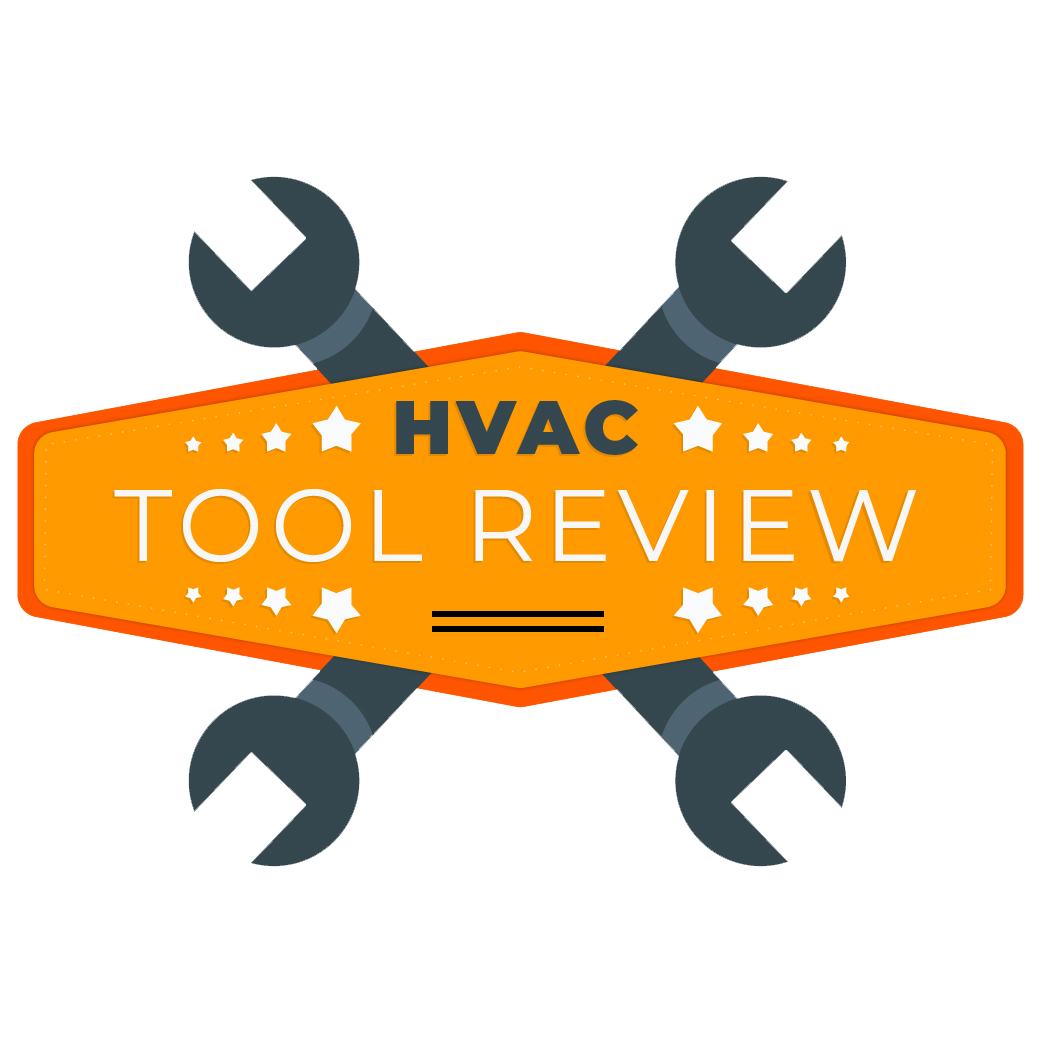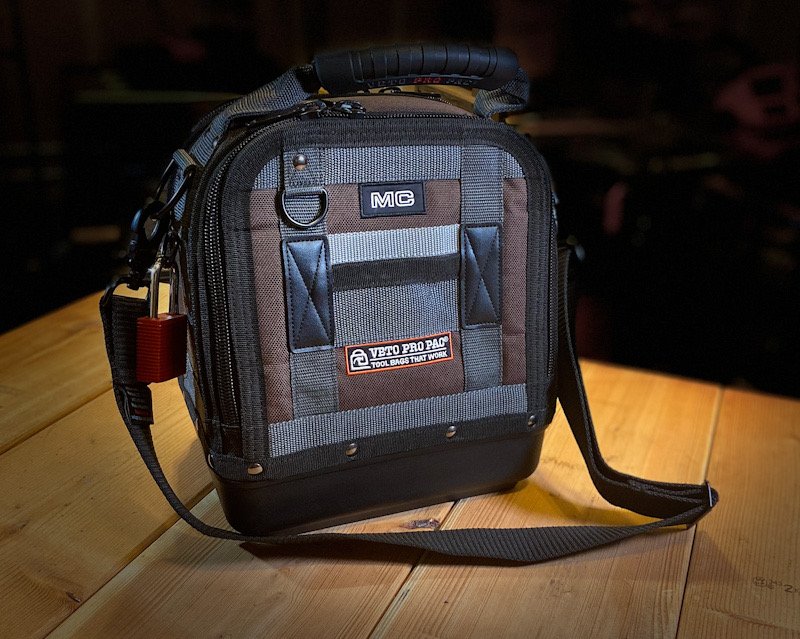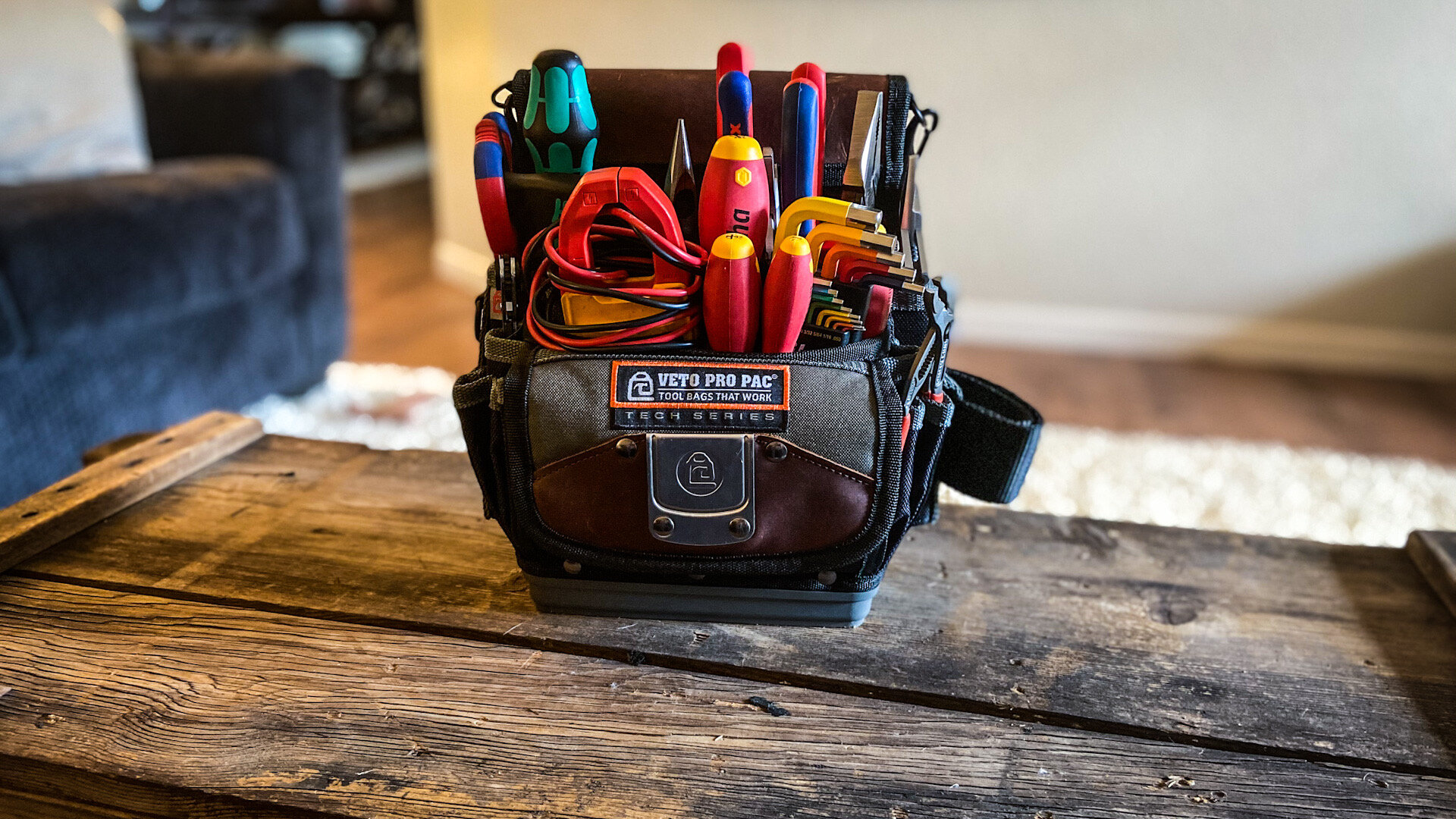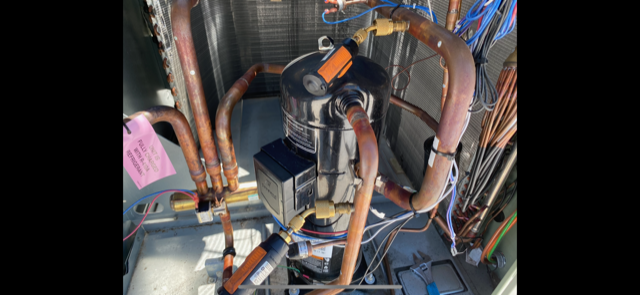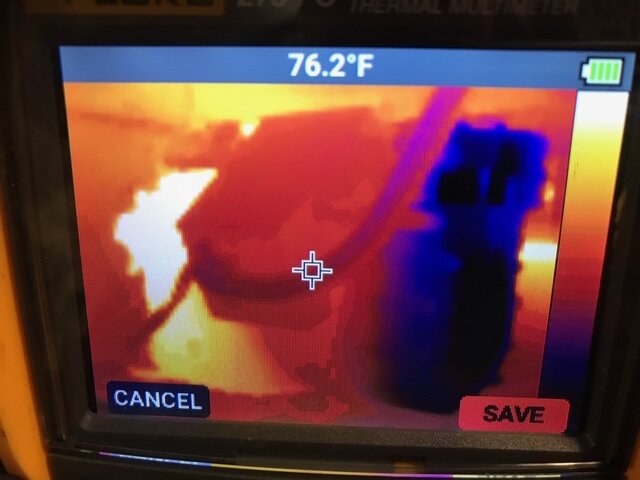Best HVAC Tools HVAC Tools List By Experience
HVAC Tools Every Tech Must Have
Complete HVAC Tool lists and load-outs for every HVAC Technician to start working in the field. We wi divide this tool list into three categories, separated by skill level.
Beginner or Helper This tech will only need a minimum set of HVAC tools to start. Typically an h helper will be with a senior technician with all the tools required to perform the job.
Mid-level HVAC Tech Typically, the tools in the list will cover anyone running service calls and performing the repairs on small to medium-sized equipment, residential and light commercial.
Equipment is usually much larger, heavier, and more expensive. Commercial Journeyman HVAC techs working in the commercial/industrial aspect of the trade often need specialized and specific HVAC tools for their everyday work. Typically this equipment and its components will need to be repaired and rebuilt .vs replaced due to the cost and logistics of returning equipment to this scale.
Often, commercial HVAC shops will purchase the required tools for their technicians. Interested in How much do HVAC Techs Make? Check out the article!
I will provide links to all the tools and products I can recommend and have used personally with success, but feel free to alter them to your brand and needs.
Beginner HVAC Tools List
A beginner to the trade will only need a basic set of hand tools, PPE safety equipment, and a tool bag.
Tool Bag - Every Technician working in the HVAC trade will need a Tool Bag to store all of their tools. I have included several options below that have been good to me. Veto packs are quality and, by far, my favorite. You know the saying buy once, cry once.
I advise anyone starting out to get a smaller bag first to cover all the basic needs. Keep it light and portable. If you get a large bag, you will tend to overfill it, with tools that don’t often get used, leading to you lugging around a ton of unnecessary and excessive weight. Check out my HVAC Service Diagnostic Pouch Setup video post.
As you progress and acquire more tools, it is common to purchase additional bags. I like to run a second larger bag that I pull out for repairs. My favorite is the Veto Pro MC, but some techs prefer the backpack style to ease climbing ladders and keep both hands free. This setup allows me to have my lightweight service bag for use on maintenance and service calls without breaking my back.
I would avoid big box store brand bags like husky, Kobalt, etc. These bags are not the same quality, nor do they have the thought into the design. The pockets never seem big enough or laid out in much of a usable fashion other than the basic storage of screwdrivers. I have shredded through a few of them.
If you are trying to save money, CLC is probably the best bang for your buck starting out, but don’t expect it to last for years. Click any of the photos below to see the current pricing on Amazon.
Drill - Life is too short of undoing every fastener by hand. Pick yourself up a little impact or drill. Make sure you use the clutch to put all those screws back in! No one likes to strip out screw holes!
I prefer Milwaukee myself, not that the other brands are bad, but Milwaukee has quickly become one of the innovators in the power tool market. They have so many different versatile tools available. If you are starting fresh and are not heavily invested in another brand, I strongly recommend investing in the Milwaukee Ecosystem.
We have guys I work with that are using the bosh, and the 20v DeWalt, without issue. I used to run the 20v Dewalt, which never had a problem, but I have switched to the red tools based on their tool lineup offerings that Dewalt did not have. I’ve been happy with that choice and have no regrets.
Meter- You may not know how to use a multimeter yet, but I think every tech in the field must carry a meter. A good multimeter will be your kit's most used HVAC Tool. Even if you are not going to be doing any service work, you need to be able to determine if a circuit is live before starting work. It is a safety issue.
You will be using a meter constantly if you are doing service work. I don’t think there has been a day in my career that I have not used my meter. Avoid cheap no-name meters that don’t have any independent safety ratings. Stick to more prominent names such as Fluke, Amprobe, and Fieldpiece. Check out my review of the Fieldpiece SC680 Multimeter Here.
I polled 100 techs to determine their preferred multimeter manufacture and was somewhat surprised by the results. I will only use fluke meters, but many other HVAC Techs have succeeded with other brands. Check out my article Best HVAC meters under $400 if you want to know more.
Shop Vacuum - If you have decided to invest in the Milwaukee ecosystem, check out the 18v shop vacuum by Milwaukee. A small portable vacuum is a must-have for cleaning up after yourself; whether in an office space dropping ceiling tile dust or in someone’s house, always clean up.
Battery life is pretty good, and it is both a wet/dry vac; if you are going to be doing a ton of heavy use, I would probably grab a 110v shop vac for cleaning cooling tower sumps and such, but this one is a great small package portable option for the smaller tasks.
Work Light - A work light is a necessity. My favorite is the Milwaukee m12 stick light. This little stick light will quickly become one of your favorite tools in your pack. The battery life is impressive, and the ability to hang the light with a magnet on any ferrous material is a game-changer. I’d recommend picking up a couple of spare batteries and a vehicle charger. Last year an 18v / 12v combo vehicle charger was released, and my life has never been the same. I am no more taking the charger up to the roof and forgetting it up there. I cannot simply charge all my batteries in the truck while driving and rotate them out as need be—game changer.
Pump Sprayer for cleaning coils. A good manual pump sprayer will work just fine. There are also a few good battery-powered options like the Milwaukee backpack sprayer if you prefer a little fancier.
Garden hose - I like carrying THESE (link to amazon) - all-metal fittings, have been extremely durable, and I can store 100ft of hose in a 5-gallon bucket. This allows easy storage and doesn’t take up much space on the truck
Water Nozzle
5-gallon Bucket
1/4’ Socket Set
3/8” Socket Set
Nut Driver Set - Preferably Magnetic long shaft hollow. At least a 5/16” and 1/4”, but you a full set (HERE) Will serve you well for years.
Ratcheting Box Wrenches
Crescent Wrenches - 8”, 10” and 12”
Channel Locks
Snap Ring Pliers
Needle Nose Pliers
Screw Driver Set
Wire Cutters
Wire Strippers
Drill Bit Kit
Tape Measure
Flash Light
Pocket Thermometer
Tin Snips
Allen Set
Hand Dolley
Grease Gun
Gloves
Rope
Safety Glasses
Extension Cord 100ft
3 - Way GFCI Splitter
11 -n-1 MultiBit
This list of beginner HVAC tools will last you for years to come. If your financial situation allows, it is always best to purchase the highest-quality tools you can afford. Tools can last you a lifetime. Buy once, cry once, and take care of your gear.
As you progress through your career, you will add the necessary tools. No need to run out and purchase a set of gauges, a recovery machine, or a vacuum pump right now. Your job at this stage is to help and learn as much as possible. Ask questions, show initiative, and always do your best to learn something new every day.
Looking to get into the HVAC Trade? Check out my post How to get into HVAC without any experience.
HVAC Apprentice Tool List
Once you have moved up from a helper into a more active role, you will need to purchase the HVAC tools that will allow you to perform the additional tasks. The Mid-level HVAC technician will need the tools from the beginner/ helper list and the tools listed below.
Refer Gauges - I would recommend Picking up a standard charging manifold or two with quality hoses, such as a yellow jacket, JB, etc. Save some money and grab a 3-port manifold set. You shouldn’t be pulling evacuations through your manifold, so no need to buy a set with a vacuum port. Read more about a proper Vacuum set up at 5 Evacuation Tools Every HVAC Tech Should Use
Once you have become comfortable using the analog manifold set, you may want to look into picking up a set of Digital refrigeration wireless gauges. My favorites are the Testo Smart Probes and the Fieldpiece Bluetooth gauge sets. You can read more about them in my post-Best Digital HVAC Gauges.
Charging Hoses - If the manifold you purchase doesn’t include hoses, pick up a set of charging hoses. I’d recommend purchasing standard hoses and adding low-loss fittings to the ends. The low-loss fittings tend to wear out through the years. Some brands offer rebuild kits such as the sealrights, but the rebuild kit is almost the exact cost as a new fitting. I prefer to keep a spare set of fittings on the truck and replace them once it starts acting up.
Stubby Gauges / Smart Probes - Sometimes, you need to gauge up to a unit for troubleshooting, but running down to the truck and grabbing an entire charging manifold is not necessary. Additionally, constantly gauging up with a complete manifold will remove refrigerant from the system if you work on something with a minimal refrigerant charge.
If you are not going to use stubby gauges, ensure your manifold is pre-charged with the correct refrigerant to avoid depleting the unit charge. Check my post if you are trying to determine which set to purchase.
There are a lot of options out there when it comes to running gauges. I Keep a set of stubby gauges outfitted with low-loss fittings in my service bag ( blog post-HVAC Service Tool Bag Setup ), so I am always equipped. I run the yellow jacket Glycerin Filled oversized gauges to a 90-degree low-loss fitting. I have found that this setup gives me the most versatility in fitting the gauges onto ports with little clearance and tight tolerances.
Temp Probes - You will need a way to measure superheat, subcooling, water temps, air temp deltas, etc. I recommend picking up a couple of bead-type thermocouples for your meter, at least one touch probe, and 1 or 2 pipe clamp thermocouples.
Vacuum Pump - Lots of options when it comes to vacuum pumps. Get one that suits your needs. If you are working on smaller systems, you don’t need a 12 cfm pump and will be perfectly fine using a 6 or 8 cfm. If you know, you will be working on large commercial equipment or VRF systems, getting an 8-12 cfm pump would be wise. You can see my evacuation setup video in my blog post - 5 Evacuation Tools Every HVAC Tech Should Use
Recovery Machine - Most recovery Machines are pretty decent these days. I recommend staying with a well-known and proven name brand such as Appion, Yellow Jacket, Navac, or Fieldpiece to ensure replacement parts and support are available if needed. These are expensive tools, so I want to ensure it is backed by some warranty and have been proven to perform.
Micron Gauge
Vacuum Hoses
2 Schrader Core Removal Tools
Refrigerant Scale
Oxy-Acetylene Torch Kit
Burn Blanket
Fire Extinguisher
Mapp Gas Torch
Insulated Screw Driver
Step Drill Bit
Angle Grinder
IR Temp Gun
Torpedo Level
Fuse Puller
Head Lamp
Sledge Hammer
Dead Blow
Ball Peen Hammer
Sawzall
Portaband
Hub Puller - 10 Tools Under $30 worth Buying
Gear Puller
Drain Opener C02 Gun - This has been my Go to and has lasted well over seven years. Check Price HERE
Pipe Wrench set
Slide Caliper
Tubing Cutters
Tire Pressure Air Gauge
Refrigeration Valve Stem Wrench
Gasket Scraper
Wire Crimper
Digital Hygrometer
Nitrogen Regulator
Digital Manometer
Pry Bar Set
Fin Comb
Jumper Wires
Inspection Mirror
Pocket Thermometer
File
Lockout Tag out Kit
Ladders
Arc Flash Protection Gear
First Aid Kit
Fall Protection Harness
Journeyman Technician HVAC Tool List
This list of HVAC Tools is geared towards a Journey level technician working in the commercial HVAC portion of the trade due to the more extensive equipment and equipment types commonly seen.
A Journeyman will need to acquire all of the tools listed above in the Helper and Mid-level HVAC technician tool list and the additional tools listed here. These tools are unnecessary, but they can save time, money, and energy and increase safe work practices by having the right tools for the job.
Refractometer
Megohmmeter
Combustion Analyzer
Leak Detector
Thermal Imaging Camera/multimeter
Transfer Pump - This tool should be a must-have if you are doing any boiler or chiller work. The convenience of draining a loop into a storage container, such as a drum, and pumping it back in when you are done with your repair is well worth it, in my opinion. My personal favorite is linked below.
Wireless Electronic Stubby Gauges - Again, it is not necessary. Still, it can be a precious tool for equipment with access panels that are otherwise partially open to refrigerant hoses running to the gauge ports. These wireless tools allow you to get real-time readings vs. a set of analog stubby gauges that you won’t be able to see while the panel doors are closed. Additionally, most wireless options today have advanced features like trending specified values, calculating BTUs/hr, superheat and subcool readouts, etc. I keep a set on my truck, and I think these are much better than a digital charging manifold.
1/2” Drive Socket Set
Torque Wrench
1/2” Impact Gun
Impact Sockets
Electronic Leak Detector
Inflator - One of the best investments I’ve ever made. Full blog post article and video Milwaukee M12 Air Pump Review
Rigging Equipment
Come - Along
Large Puller - This Proto Puller has been my go-to over the years. The quick, easy setup and rigid design allowing much easier single-person use for longer reaches has been great. Assembles and disassembles in seconds, ability to bolt the arms together for even longer reach. Stores are nicely dispersed in a tool pouch in my bearing tool bag loadout.
Pry Bars
Bearing Heater and or Cold Mount Kit - I’ve found that the cold mount kit found is the way to go on anything under 60 horsepower. Larger than that, I have not found a kit that fits that sized bearing. I carry both kits, and use the cold mount whenever possible, but will use the bearing heater when required.
Dial Indicators
Brass Punch
Punch and Chisel Set
Heat Gun
Petes Plug Water Gauges
Solenoid Magnet Tool
Easy Out Kit
Tap and Die Set
Over-sized Box Wrench Set
Anemometer
Conclusion
As you can see, the list of HVAC tools is quite extensive. HVAC technicians need a lot more tools than most people realize.
Most know of the apparent main tools such as gauge manifolds, temperature probes, etc., but as you see by this list, many specialty HVAC tools are required to perform the job to the highest level. Make sure to select the right tool for the job.
Let me know if I missed anything or if you know of an HVAC-related tool that should be added to this HVAC Tool list.
As an Amazon Associate HVAC Tool Review earns commission from qualifying purchases
